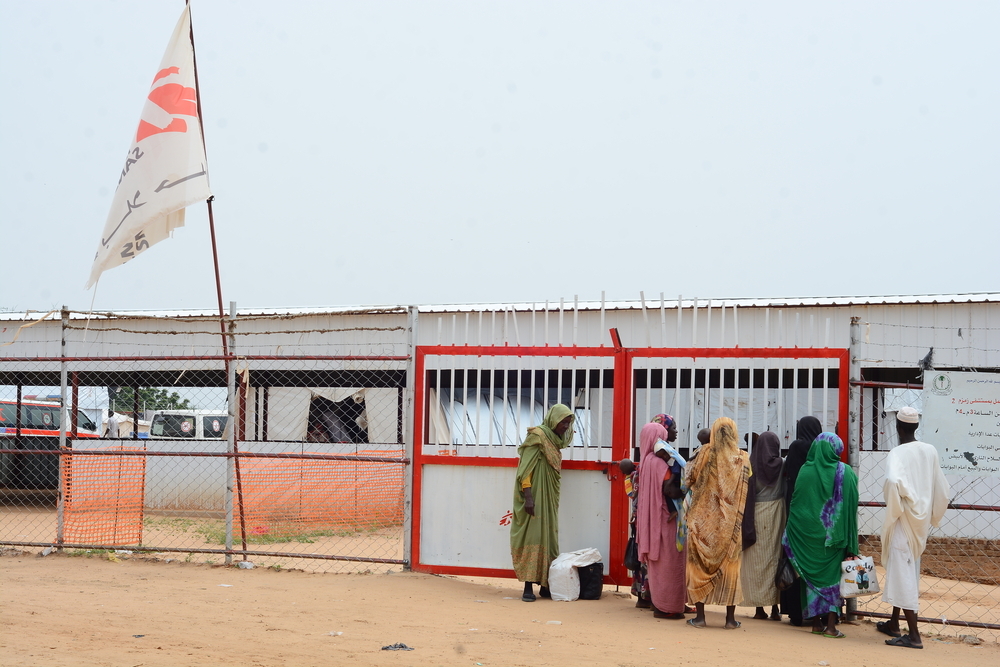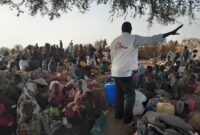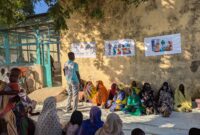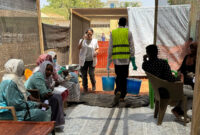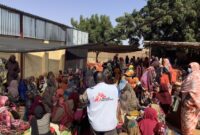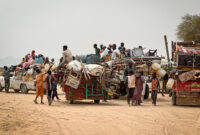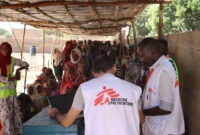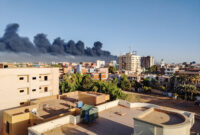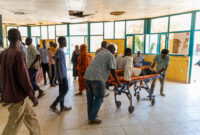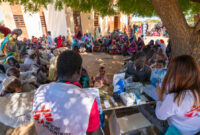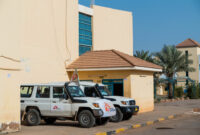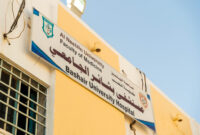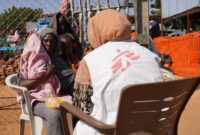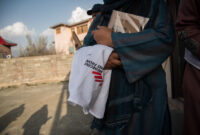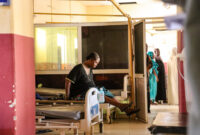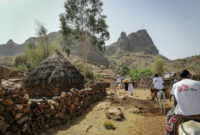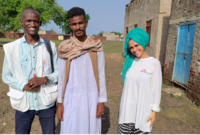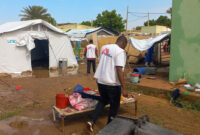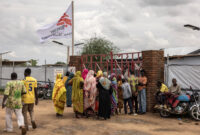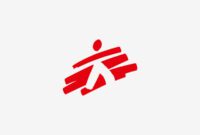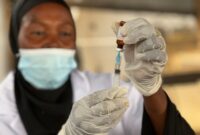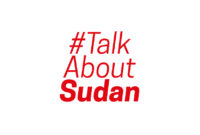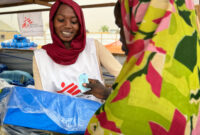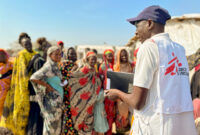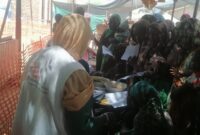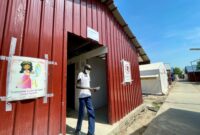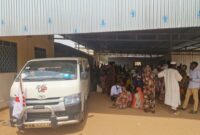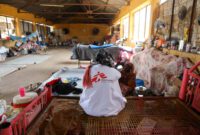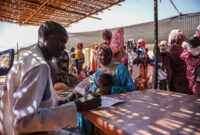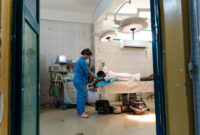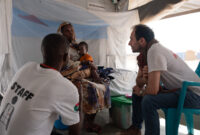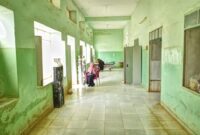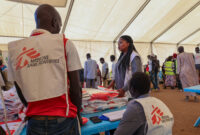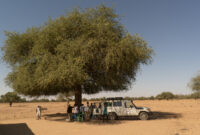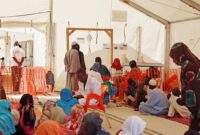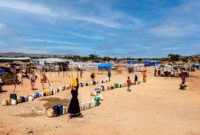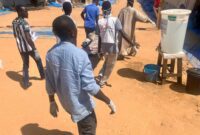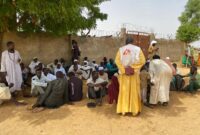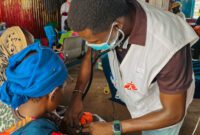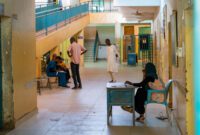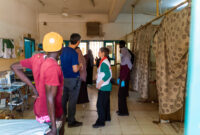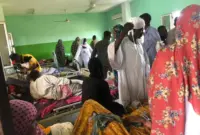Sudan: Catastrophic situation in Zamzam camp, every effort must be made to finally deliver food, medicines and essential supplies to blockaded and starved communities
As the results of a nutrition screening carried out by the Sudanese health authorities and Doctors Without Borders/Médecins Sans Frontières (MSF) earlier this month in Zamzam camp, North Darfur, indicate a catastrophic nutritional situation that is only getting worse, MSF urges the UN and international stakeholders involved in negotiating broader humanitarian access to consider all options to quickly deliver food and essential supplies in the area, including by airdrops.
“Not only do the results confirm the disaster that we and other stakeholders have been observing and alerting on for months, they also indicate that every day things are getting worse and we’re running out of time” adds Michel Olivier Lacharité, head of emergency operations for MSF. “We are talking about thousands of children who will die over the next few weeks without access to adequate treatment and urgent solutions to allow humanitarian aid and essential goods to reach Zamzam”.
Despite announcement that gave hope for positive developments, for instance following Geneva peace talks, no significant amount of humanitarian relief has reached the population in the Zamzam camp and the nearby, war-stricken city of El-Fasher since the IPC Famine Review Committee concluded that famine conditions were prevalent in the area on Aug. 1 this year. Most supply roads are controlled by the Rapid Support Forces (RSF) who have made it all but impossible to bring therapeutic food, medicines and essential supplies into the camp since the intensification of fighting around El Fasher last May.
There’s no more time to waste if thousands of preventable deaths are to be avoided. Among the more than 29,000 children under five years old screened last week during a vaccination campaign in Zamzam camp, 10.1 per cent suffer from severe acute malnutrition (SAM), a life-threatening condition, while 34.8 per cent suffer from global acute malnutrition (GAM), which will evolve into more severe form of malnutrition if not treated effectively and in timely fashion.
“The malnutrition rates found during the screening are massive and likely some of the worst ones in the world currently.”
Claudine Mayer, MSF medical referent
“The malnutrition rates found during the screening are massive and likely some of the worst ones in the world currently. It’s even more terrifying as we know from experience the results are often underestimated in the area when we use only the mid-upper arm circumference criteria like we did here instead of combining it with measuring weight and height,” explains Claudine Mayer, MSF medical referent.
An MSF mass screening carried out in March 2024 had revealed an 8.2 per cent SAM rate and a 29.4 per cent GAM rate, which was already twice as high as the 15 per cent alert threshold of the World Health Organisation.
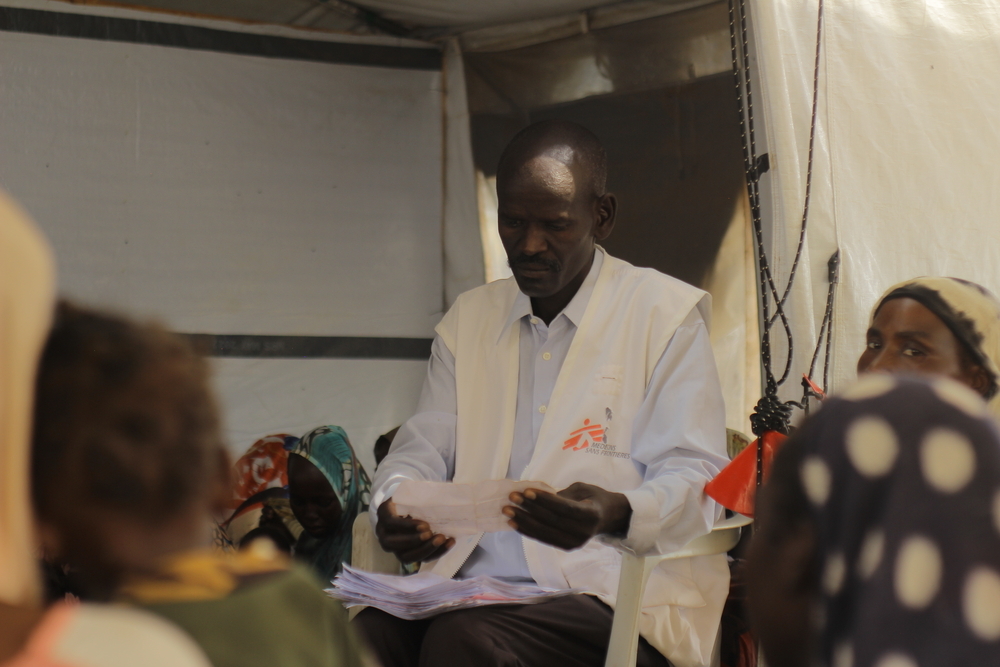
“In such a dire situation, we should be scaling up our response: instead, running critically low on supplies, we are reaching breaking point and were recently forced to reduce our activity to focus solely on children in the most severe conditions.”
Claudine Mayer, MSF medical referent
The only food available is from pre-existing stocks, which is not sufficient for people living in the area, and food prices are at least three times as high as in the rest of Darfur. Fuel prices are soaring as well, making it very difficult to pump water and run clinics that rely on generators for electricity. Our staff on site report that for many, it’s impossible to rely on more than one meal per day.
“In such a dire situation, we should be scaling up our response: instead, running critically low on supplies, we are reaching breaking point and were recently forced to reduce our activity to focus solely on children in the most severe conditions” says Claudine Mayer. “This means we had to suspend treatment for the less severe forms of malnutrition, who represented an active cohort of 2,700 children, and to put an end to consultations provided to adults and children over five years old, who represented thousands of consultations every month”.
Zamzam camp is estimated to host between 300,000 and 500,000 people, many of them displaced many times over, who are trying to flee the war that has been tearing up their country since last year. In El Fasher, where many of the displaced used to live, only one hospital remains partially standing after the others were damaged or destroyed in the conflict.
“Due to these unconscionable blockages on supplies, we feel like we are leaving behind an increasing number of patients who already have very few options for getting lifesaving medical care” adds Michel Olivier Lacharité. “If the roads are not an option for getting massive quantities of urgent supplies into the camp, the United Nations should look at every available option. Delaying these supplies meaning causing more deaths – thousands of them, among the most vulnerable.”
